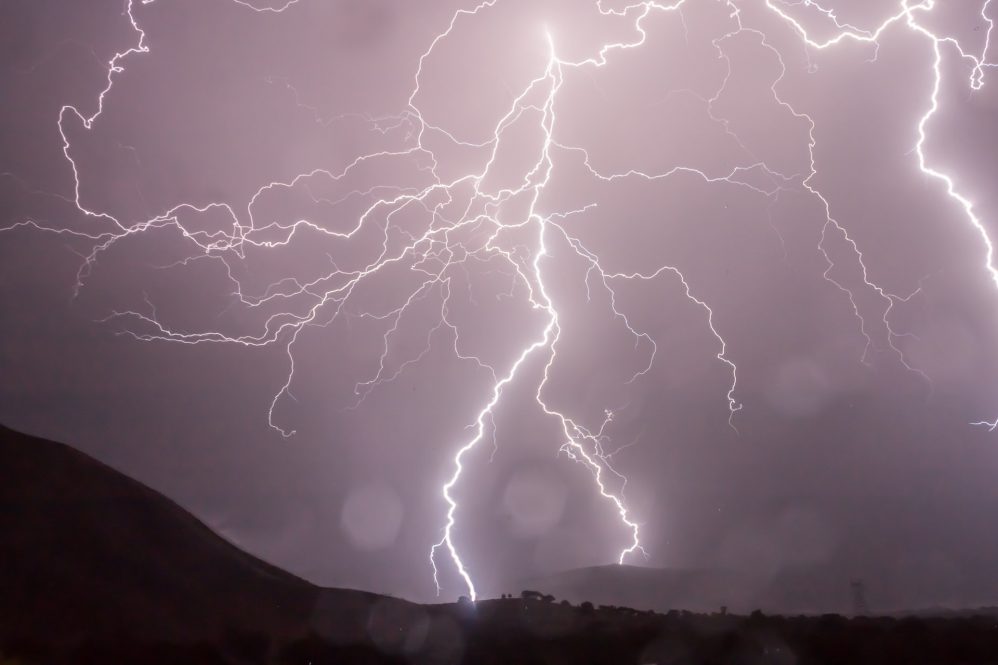Last month, Dominion Energy signed an agreement with UConn to support a new, preliminary study focused on the development of an Outage Prediction Model (OPM) for Dominion Energy’s Virginia and North Carolina service territory. At UConn, Dr. Diego Cerrai is the PI for this initiative, with the support of Dr. Emmanouil N. Anagnostou (Co-PI, Associate Dean), three graduate students, and one post-doctoral associate.
In the past month, Dr. Cerrai has also been named the Associate Director for Storm Preparedness and Emergency Response for the Eversource Energy Center (EEC). The new study officially began in January 2022 and will last through December 2023.
The proposed model will be used as a tool to prepare for storm-related power outages in the electric distribution system. While transmission lines move electricity across large distances and are supported with tall towers, distribution lines are the power lines that we usually see on the sides of roads. Based on these distribution lines’ proximity to nearby vegetation, they are regularly interrupted during storms by falling trees or branches which cause outages.
The UConn EEC already has developed outage prediction models for Eversource Energy and AVANGRID, showing great predictability in the weather patterns of New England. The model analyzes data and predicts storm-related outages in advance of rain/windstorms, thunderstorms, snow/ice storms, extreme storms, and tropical storms. The interactions that occur in the relationship between weather, trees, and infrastructure, vary by storm type.
For example, a snowstorm’s impact can differ if precipitation is heavy or wet versus when it is dry; wet snow readily sticks to trees and lines, pulling them down making them susceptible to breakage. The team is determined to improve such models to not only replicate the real-world consequences of storm damages but to also help prepare repair crews beforehand.
Eversource’s current OPM is operational in Connecticut, Massachusetts, New York, and New Hampshire. The new study will continue to strengthen existing outage models with the inclusion of mid-Atlantic storm data. Through this opportunity, researchers such as Dr. Cerrai will be able to carry over their existing expertise to generalize a predictive model that will be more accurate to geographic regions outside of New England.
One of the main research goals is to further validate the existing models in New England for other areas and make iterative improvements. In these first steps, this collaboration has the potential to inspire future projects, expanding to more states further south. The keyword is preparedness—these models continue to impact the way the world prepares for and recovers from storms.
After having the first kick-off meeting with Dominion Energy in mid-February, Dr. Cerrai proudly shared his hopes for the future:
“I have been working towards this goal for a long time, and I am very happy to start this collaboration because it is important for our students and more in general for the scientific community to gain additional knowledge on the relationship between weather, vegetation, and infrastructure in a way we have not seen before. It is also important for our industry partners because we will share our expertise gained with the UConn OPM, which is a state-of-the-art model that has been developed for all storm types, which is one of a kind.”
At Dominion Energy, Shad Hedrick who works in the Emergency Preparedness Center states, “Leveraging an outage prediction model to develop plans is exciting. I’m looking forward to the partnership with UConn.”
The Eversource Energy Center at the University of Connecticut is a partnership between New England’s largest energy provider and the School of Engineering; the College of Agriculture, Health and Natural Resources; and the School of Business, located in the Innovation Partnership Building at UConn Tech Park. The partnership, established in 2015, is dedicated to using cutting-edge research to solve real-world challenges where weather, security, and energy intersect.



